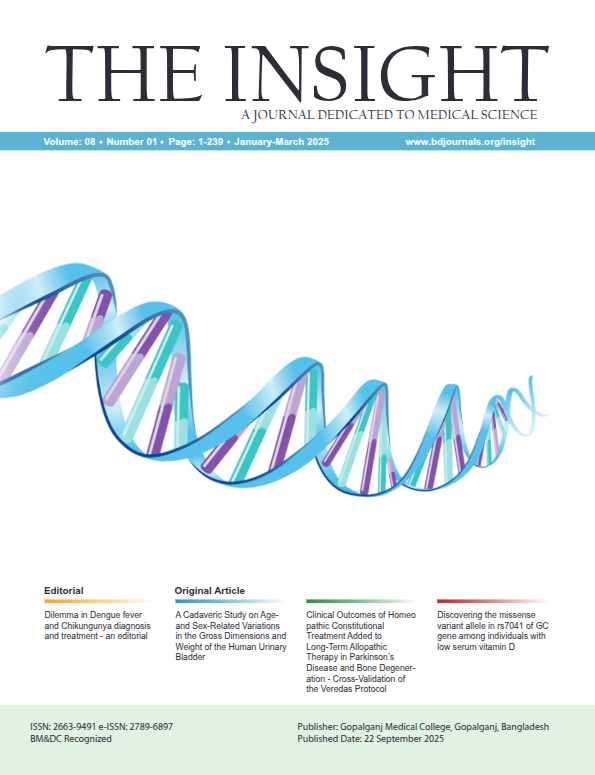Abstract
Background: Haemorrhoids are a common anorectal condition that can significantly affect patients' quality of life. Rubber band ligation (RBL) is widely regarded as a safe and effective outpatient procedure for the treatment of second-degree and selected third-degree haemorrhoids. Objective: To evaluate the clinical outcomes, efficacy, and safety of rubber band ligation in a cohort of 50 patients with symptomatic haemorrhoids. Methods & Materials: A prospective study was conducted from July 2007 to March 2008 at the Department of Surgery, Chittagong Medical College Hospital, Bangladesh. The study followed up on the 7th day, 6th week, and 6th month post-procedure of 50 patients diagnosed with haemorrhoids who underwent RBL. We documented demographic data, clinical presentations, procedural outcomes, complications, and the need for further intervention. Results: Among the 50 patients treated, 68% were male, and the majority were aged between 40 years. Per rectal bleeding was the most common symptom (100%), with prolapse during defaecation reported in 86% of cases. 58% of patients showed mild anaemia. RBL resulted in symptom resolution in 88% of patients. Complications were predominantly mild and included haemorrhage (31.57%), pain (21.04%), oedema (18.42%), and band dislodgement (5.26%), all managed conservatively. Recurrence of haemorrhoids was observed in 6% of cases. Conclusions: Rubber band ligation is a safe, effective, and well-tolerated outpatient procedure for the management of second-degree and selected third-degree haemorrhoids. It achieves a high success rate with minimal complications and obviates the need for hospital admission or anaesthesia, making it particularly suitable in resource-limited settings. Further studies with larger, randomised cohorts are recommended to validate these findings and refine patient selection.

This work is licensed under a Creative Commons Attribution 4.0 International License.
Copyright (c) 2025 The Insight





 PDF
PDF